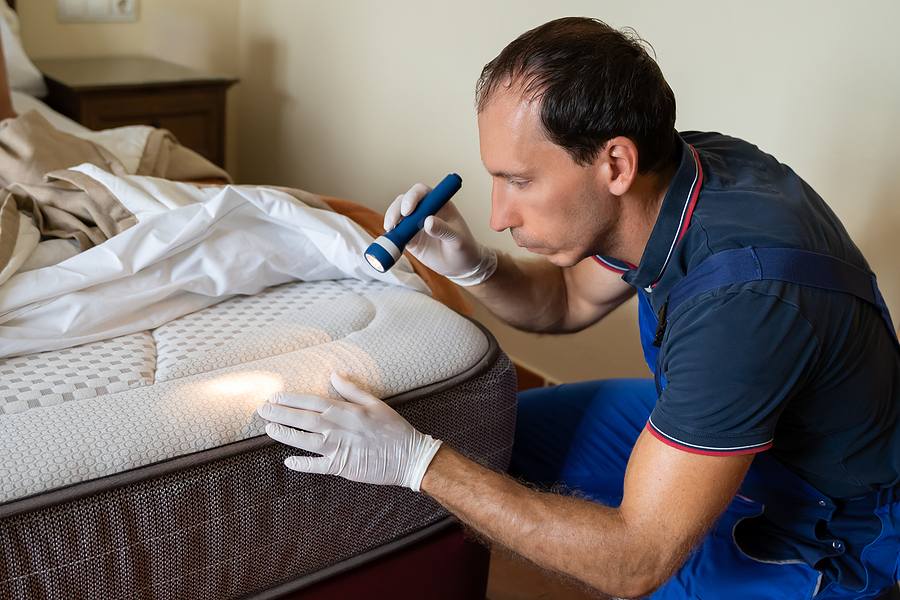Professional Bed Bug Exterminator: DC Solutions and Heat Treatment
Professional Bed Bug Exterminator: DC Solutions and Heat Treatment
Blog Article
Checking Out the Scientific Research Behind Bed Bug Heat Treatments as a Sustainable Insect Monitoring Strategy
In the realm of parasite monitoring, the pursuit for efficient and sustainable solutions continues to be a consistent quest. One such method that has acquired grip in recent times is the usage of warmth therapies to deal with bed insect invasions. By harnessing the science behind thermal fatality points for these consistent pests, heat treatments offer an encouraging option to typical chemical-based approaches. The intricacies of how warm effectively eliminates bed pests and the more comprehensive implications for sustainable bug management practices make this a subject worth checking out additionally.
Bed Pest Heat Treatment Refine

Thermal Fatality Factor for Bed Insects
Revealing bed pests to raised temperature levels beyond their thermal resistance variety is vital for accomplishing efficient obliteration in warmth therapy procedures. The thermal death point for bed pests refers to the temperature level at which these bugs can not survive. Research suggests that bed pests start to perish when exposed to temperatures over 113 ° F(45 ° C) for a continual period. As the temperature level enhances, so does the mortality rate of bed insects. At around 118 ° F(48 ° C ), bed insects start to die rapidly, with a mortality rate of almost 99% within mins of direct exposure. This demonstrates the sensitivity of bed pests to heats and highlights the efficiency of warm therapies in eradicating infestations. By getting to and maintaining temperatures above the thermal fatality point for bed pests, insect administration specialists can guarantee extensive removal of bed insect populations, consisting of hard-to-reach areas where chemical treatments may be much less reliable. Recognizing the thermal fatality point for bed bugs is essential for implementing effective warmth treatment strategies and achieving lasting bug monitoring outcomes.
Benefits of Warmth Treatments
Having actually established the vital thermal fatality point for bed insects, it is necessary to now discover the considerable advantages that heat treatments supply in effectively eliminating these resilient bugs. One of the main advantages is that warmth can permeate deep into fractures and holes where bed bugs conceal, making sure that also the most hard-to-reach locations are heated to lethal temperatures.
In addition, heat treatments are eco friendly and non-toxic, making them a lasting pest monitoring method. Unlike chemical pesticides, warm therapies do not leave harmful residues that can posture threats to human wellness or the setting. This aspect is specifically crucial in delicate settings such as hospitals, colleges, and property areas where chemical usage may not be desirable.
Furthermore, warmth therapies have a recommended you read high success price in getting rid of bed pest invasions in a single therapy, decreasing the need for several brows through and lessening disturbance to owners. This efficiency not only saves money and time however also offers satisfaction to those his response taking care of bed insect issues.
Effectiveness of Heat Treatment

Warmth therapies have the included advantage of killing bed pest eggs, which are often immune to typical chemical therapies. Generally, the performance of heat treatments in removing bed insect infestations makes them a reliable and lasting insect management method.
Lasting Pest Management Conveniences
Applying sustainable insect administration techniques offers long-term advantages for both the atmosphere and public wellness. By making use of methods such as warmth treatments for parasite control, we can decrease the reliance on hazardous chemical pesticides that can have damaging effects on environments and human health - DC exterminator. Lasting insect management techniques assist in protecting biodiversity by targeting particular pests without hurting non-target microorganisms, therefore preserving a balanced ecological community
Furthermore, lasting pest administration techniques add to the general wellness and health of the public. By reducing exposure to hazardous chemicals used in standard insect control methods, heat therapies provide a more secure choice for pest monitoring in residential, business, and public spaces. This decrease in chemical usage also aids in protecting against chemical deposits from contaminating soil, water, and air, protecting ecological quality.
Final Thought
In verdict, bed insect warmth treatments have actually been shown to read review be a effective and lasting bug administration method. The thermal fatality point for bed pests makes them at risk to warmth treatments, which have numerous benefits over typical chemical treatments. The effectiveness of warmth therapies in removing bed pest problems while decreasing environmental effect highlights the potential of this method as a sustainable option for parasite control.
The bed insect heat therapy procedure involves raising the temperature within ravaged locations to a degree that successfully gets rid of bed bugs and their eggs. By reaching and preserving temperatures above the thermal death point for bed insects, pest administration experts can make sure extensive removal of bed pest populations, including hard-to-reach locations where chemical treatments might be less effective. One of the primary benefits is that warm can pass through deep right into cracks and holes where bed bugs hide, making certain that also the most hard-to-reach locations are heated to dangerous temperatures. Unlike chemical therapies that may leave behind resistant populations, heat therapies provide a non-toxic and ecologically pleasant remedy that can permeate deep into furniture, walls, and various other hard-to-reach areas where bed pests hide.
The thermal death point for bed insects makes them prone to heat therapies, which have many advantages over standard chemical treatments.
Report this page